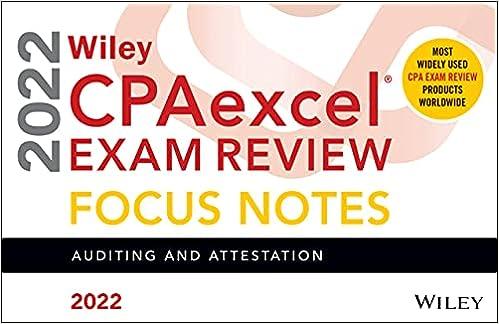

Problem #1 The city of Philadelphia wants to study the production of bus service. The city officials hire a local group of academics to conduct the research study. The academics decide to use the natural log ( ln ) form of the Cobb-Douglas production function to estimate. A excellent resource for this problem is Page 302 footnote 10 the power-point slides I put together on the Cobb-Douglas production function. The functional form of the Cobb-Douglas production function looks as the following: 1. Q=AKLG Since the Cobb-Douglas production function is non-linear the academics decide to take the natural log(ln) linear form which looks like the following: 2. lnQ=lnA+lnK+lnL+lnG This equation is now in a linear form which allows linear regression to be utilized. The following is the estimated equation performed by the research team: 3. LnQ=2.303+0.40lnK+0.60lnL+0.20lnG (3.40) (4.15) (3.05) R2=0.89 and DW=2.15 Where Q= number of miles driven; K= number of buses utilized; L= number of bus drivers employed each day and G= gallons of gasoline used. The corresponding estimated t-statistics are in parentheses below the estimated regression coefficients. The sample size, n, is 48 . Note the following learning points: i. if you take the lnQ=%Q (that is also true of K,L&G ). Thus the change in the lnQ is the percentage change in Q. Thus, in the estimated equation above the estimated coefficient on lnG is 0.02 which means if you change lnG(lnG) holding K and L fixed, we have lnQ=0.20lnG=>lnQ/lnG=0.20> %Q/%G=0.20. Note this is similar to an elasticity coefficient or the elasticity of miles drien with respect to gas usage is +0.20. ii. To take the anti-natural log in an Excel cell type =Exp (the numerical value). Exp is shorthand for exponential which is the base of the natural logarithms. As an example if lnQ=5.75 then in a cell in Excel type in a cell =exp(5.75 or reference the appropriate cell) the result will equal 314.19 to 2 decimal points. Output Q will equal 324.19. If you have any questions, please just email me and ask. I'm always here to help you. Now to the questions. a. Are the estimated coefficients on K,L and G statistically significant at =0.025 ? Explain. b. Interpret the R2. c. Using equation " 3 " What is the number of miles driven, Q, if K=250,L= 425 and G=3750 ? d. Using the estimated coefficients in "equation 3 " on A,,,& find Q using "equation 1". e. Using the marginal product equations of footnote 10 page 302 or my power points in Chapter 7D2L, calculate the MPK,MPL and the MPG. f. Using the same footnote calculate the output elasticity of K,L and G. g. For each output elasticity in part f if K increases by 10% how much does Q increase by? If L increases by 10% how much does Q increase by? If G increases by 10% how much does Q increase by? h. Do the results of this study show that economies of scale are increasing, decreasing or constant? Explain. Problem #1 The city of Philadelphia wants to study the production of bus service. The city officials hire a local group of academics to conduct the research study. The academics decide to use the natural log ( ln ) form of the Cobb-Douglas production function to estimate. A excellent resource for this problem is Page 302 footnote 10 the power-point slides I put together on the Cobb-Douglas production function. The functional form of the Cobb-Douglas production function looks as the following: 1. Q=AKLG Since the Cobb-Douglas production function is non-linear the academics decide to take the natural log(ln) linear form which looks like the following: 2. lnQ=lnA+lnK+lnL+lnG This equation is now in a linear form which allows linear regression to be utilized. The following is the estimated equation performed by the research team: 3. LnQ=2.303+0.40lnK+0.60lnL+0.20lnG (3.40) (4.15) (3.05) R2=0.89 and DW=2.15 Where Q= number of miles driven; K= number of buses utilized; L= number of bus drivers employed each day and G= gallons of gasoline used. The corresponding estimated t-statistics are in parentheses below the estimated regression coefficients. The sample size, n, is 48 . Note the following learning points: i. if you take the lnQ=%Q (that is also true of K,L&G ). Thus the change in the lnQ is the percentage change in Q. Thus, in the estimated equation above the estimated coefficient on lnG is 0.02 which means if you change lnG(lnG) holding K and L fixed, we have lnQ=0.20lnG=>lnQ/lnG=0.20> %Q/%G=0.20. Note this is similar to an elasticity coefficient or the elasticity of miles drien with respect to gas usage is +0.20. ii. To take the anti-natural log in an Excel cell type =Exp (the numerical value). Exp is shorthand for exponential which is the base of the natural logarithms. As an example if lnQ=5.75 then in a cell in Excel type in a cell =exp(5.75 or reference the appropriate cell) the result will equal 314.19 to 2 decimal points. Output Q will equal 324.19. If you have any questions, please just email me and ask. I'm always here to help you. Now to the questions. a. Are the estimated coefficients on K,L and G statistically significant at =0.025 ? Explain. b. Interpret the R2. c. Using equation " 3 " What is the number of miles driven, Q, if K=250,L= 425 and G=3750 ? d. Using the estimated coefficients in "equation 3 " on A,,,& find Q using "equation 1". e. Using the marginal product equations of footnote 10 page 302 or my power points in Chapter 7D2L, calculate the MPK,MPL and the MPG. f. Using the same footnote calculate the output elasticity of K,L and G. g. For each output elasticity in part f if K increases by 10% how much does Q increase by? If L increases by 10% how much does Q increase by? If G increases by 10% how much does Q increase by? h. Do the results of this study show that economies of scale are increasing, decreasing or constant? Explain








